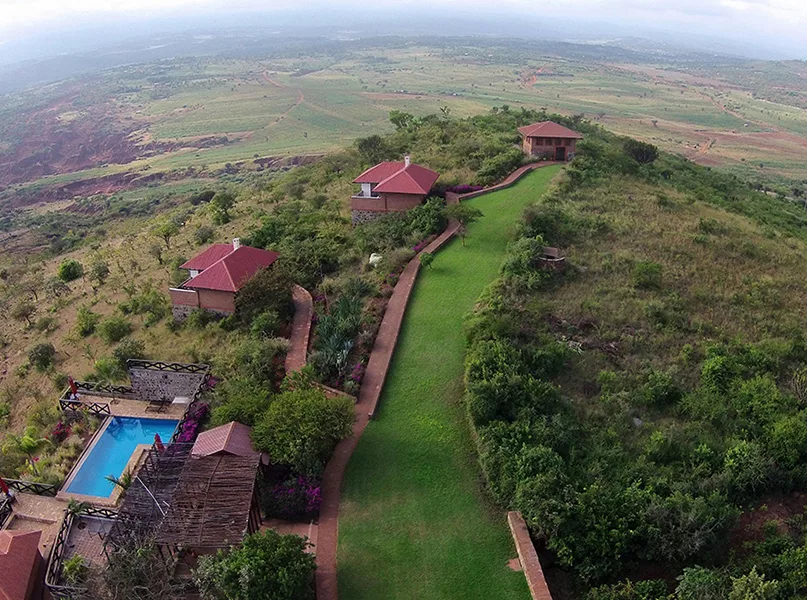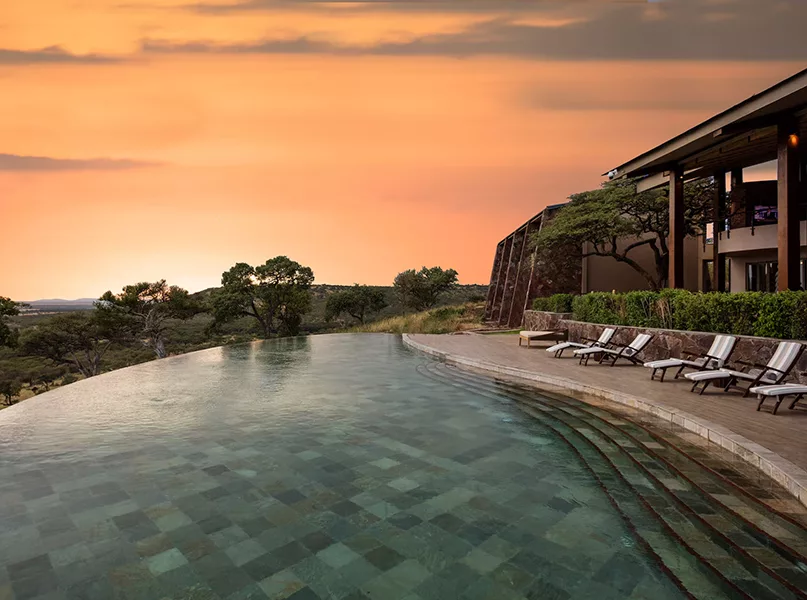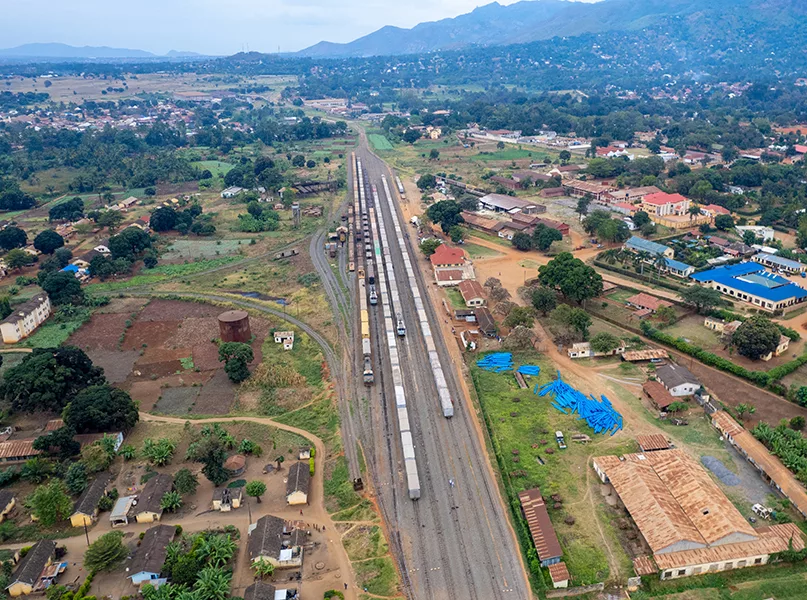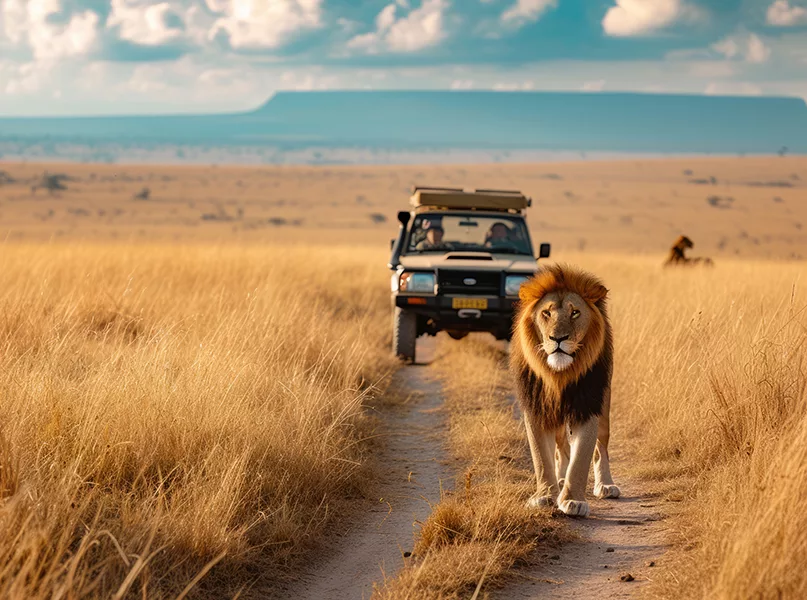Showcasing outstanding indigenous wildlife, endless adventurous pursuits, vast, natural plains, unparalleled hospitality, and fascinating culture and cuisine, Tanzania emerges as a travel destination of choice.
INTRODUCTION
Some of the planet’s rarest flora and fauna, most captivating Indigenous cultures, and stunning landscapes all combine to present Tanzania as one of Africa’s most diverse and varied travel destinations.
Playing host to the Big Five and the Great Migration – some of Earth’s most impressive natural phenomena – it’s no wonder Tanzania is considered a world-class safari destination. Serengeti National Park, in particular, which translates as ‘endless plains’, features sweeping savannahs, undulating mountains, and serene, glassy watering holes, and is home to every type of wildlife you could hope to encounter on the safari adventure of a lifetime.
For many years, Kilimanjaro has provided a source of intrigue, exploration, and discovery for climbing aficionados and travellers alike. Rising high into the vast skies above and looming impressively over the tawny grasslands and dense, verdant forestry that surround it, Africa’s highest peak is hard to miss.
In stark contrast to the adventurous heights of Kilimanjaro, Zanzibar, a charming and petite archipelago just over 100 kilometres off the coast of Dar es Salaam, presents a secluded oasis for those seeking peace and tranquillity. Turquoise waters, palm-fringed white sand beaches, and glowing, auburn sunsets present an idyllic island sanctuary.
The story of Zanzibar’s rich culinary landscape, which includes its abundance of natural spices such as cinnamon, cardamom, ginger, turmeric, and nutmeg, offers visitors plenty to discover. Notably, it is believed that the delicately aromatic ylang-ylang flower, which is native to the island, inspired perfumiers at Chanel to create its famous No. 5 scent.
So, whether you seek a stimulating safari adventure in one of the country’s many vast national parks, a demanding climbing challenge at Kilimanjaro, or a completely secluded island getaway on the archipelago of Zanzibar, amongst a choice of countless other attractions, Tanzania is the place for you.

Q&A WITH KENNEDY EDWARD, CEO, THE HOTELS ASSOCIATION OF TANZANIA
We speak to Kennedy Edward, CEO of the Hotels Association of Tanzania (HAT), who outlines how the organisation advocates for the East African country as a strategic investment and business destination whilst supporting the sustainable conservation of natural resources and rare wildlife.
Firstly, what are the overall aims of HAT?
Kennedy Edward, CEO (KE): HAT began as the Hotels Keepers Association back in the 1980s, when the hospitality sector migrated from government ownership to private management.
Fast-forward to the early 2000s, and HAT as we know it today was born, registered as a company and limited by guarantee by private sector investors in the hospitality industry.
As we speak, the association has undergone another minor evolution, transitioning from a company limited by guarantee to a non-profit society.
HAT’s core vision is to see the tourism and hospitality sector thrive sustainably through key areas of focus, which include improving Tanzania’s investment and business environment, advocating for sustainable practices, and conserving the country’s natural resources.
What are your organisation’s current goals and how do you plan to achieve them?
KE: The association’s current goals include campaigning for the development of Tanzania’s investment and business climate through strategic engagement with the government in order to align policies and regulatory frameworks.
Another area of focus is on practicing conservation and sustainability when utilising tourism resources. Given that tourism is the revenue-generating component of our conservation efforts, the association is keen to share its experiences and advise both private and public sector players on how to best make necessary reforms and boost revenue generation which, in turn, supports the sustainable conservation of resources.

Why, in your opinion, should someone visit Tanzania?
KE: Tanzania is one of very few destinations in the world that has so much natural beauty to offer; from diverse wildlife, sandy beaches, and the highest peak in Africa to friendly people and mouthwatering African dishes.
Despite being known for Serengeti National Park, Kilimanjaro, and the island of Zanzibar, Tanzania has so much more to offer all types of tourists, from high-end, exclusive safari-goers to budget adventurers and thrill seekers.
The southern circuit, also known as the ‘true wilderness’, includes the likes of Ruaha National Park, Nyerere National Park, the Udzungwa Mountains, and the virtually untouched Mafia Islands, which are yet to be widely explored.
On top of that, Tanzania has an extensive cultural heritage to discover, boasting over 120 native tribes and vast cities that can accommodate meetings, conferences, and exhibitions with a true African touch.

As a culturally vibrant destination, what type of traveller does Tanzania typically attract?
KE: Over the years, we have witnessed a broad range of travellers visit the country, including celebrities such as Bill and Melinda Gates, Oprah Winfrey, and Will Smith, who typically desire high-end, exclusive safaris.
On the other hand, budget and solo travellers prove to be more adventurous and seek to explore the destination on a more intimate, ground level.
The dynamics of what Tanzania has to offer have historically catered to all types of travellers.
What does the nation offer in terms of sustainable or eco-friendly travel experiences?
KE: Given that Tanzania is predominantly a wildlife and nature-based destination, sustainable and eco-friendly travel models are offered from the outset.
This is reflected by the fact Tanzania has dedicated over 30 percent of its territorial land to the conservation of protected areas such as national parks, game reserves, forest reserves, geoparks, and marine parks.
To complement this, travellers are offered customised services to showcase the country’s true ‘nature focus’. For example, we incorporate eco-friendly infrastructure design, sustainable ground-handling operations, and accommodation that caters to clients’ needs, whilst offering non-invasive activities in the wilderness.

What recent trends are currently transforming tourism in Tanzania?
KE: Climate awareness, sustainable practices, and conservation are major recent trends and transformations taking place in the country and across the continent at large.
So far, this has been implemented at a grassroots level and, in the case of Tanzania specifically, through policy and regulatory frameworks and investment practices, which have trickled down to what is offered to travellers.
Are you optimistic about the future of the tourism industry in Tanzania?
KE: The future looks bright, and it’s safe to say that Tanzania is one of the few countries in the world that has fully recovered from the COVID-19 pandemic.
This can be attributed to the proactive measures taken by both the private and public sector players in marketing the destination, alongside continuous collaboration in improving the services and products offered to international visitors.
Finally, are there any particularly unique experiences or underrated activities that Tanzania has to offer?
KE: Yes! Alongside the southern circuit, Kilwa Kisiwani and Lindi are unique and untapped areas with great potential that are yet to be explored.
Additionally, rich cultural heritage, local cuisines, and marine research – especially in the great lakes of Tanganika and Nyasa – are other areas and activities that have huge potential and are yet to be tapped into.
And as for the wildlife safari side, the south has Nyerere, Ruaha, Mikumi, and Udzungwa National parks to cater for the adventurous experience away from the crowd.

OUTLOOK RECOMMENDS
Do:
FOR A TAILOR-MADE SAFARI EXPERIENCE…
Authentic Tanzanian safari company, Royal Tiger Tours, is dedicated to showcasing the country’s diverse wildlife and endless nature.
Royal Tiger Tours offers participants the unique opportunity to explore the heart of Africa in an incredible 4×4 vehicle and discover the region’s great parks and natural spaces.
Traversing a variety of landscapes and witnessing Indigenous tribes such as the Masai, you will see forests with rich bird varieties, green mountains, serene lakes occupied by flamingos, and endless savannahs such as the wide-open plains of Serengeti National Park.
Expect to witness lions and cheetahs hunting their prey, thousands of ungulates cantering during the Great Migration, and elephants nursing their families.
A vast range of multi-day safari and trekking options present visitors with excursions to suit any preference, whilst the company’s Tanzania day trips offer an excellent alternative for those struggling for time.
Packing all the magnificence of a rich safari into a day-long trip, this option takes place in Arusha National Park, where lush, forested dunes at the foothills of Mount Meru are home to wildlife such as gazelles, impalas, buffalos, wildebeest, hyenas, baboons, giraffes, hippos, flamingos, and tree-climbing lions.
Whether you seek week-long luxury, or a whistle-stop wildlife excursion, choose Royal Tiger Tours for all your Tanzanian safari needs.

FOR CATCHING A GLIMPSE OF THE BIG FIVE…

Eat:
FOR A UNIQUE BIRDS-EYE VIEW…
The crater-rim dining room at Ngorongoro Serena Safari Lodge is a breathtaking, atmospheric viewpoint, offering diners the opportunity to observe the diverse wildlife of the Ngorongoro Crater over 2,000 feet below.
Featuring dishes such as marinated tilapia fish and Kilimanjaro coffee panna cotta, the restaurant’s culinary offerings are deeply imbued with the flavours of the landscapes that surround it.
FOR SEAFOOD IN A PICTURESQUE SETTING…
Visit The Rock Restaurant Zanzibar, an iconic location just metres from the island’s sandy shores that offers panoramic, 360-degree views of the stunning azure waters of the Indian Ocean and Zanzibar itself.
With a menu featuring local seafood dishes with an Italian twist, such as parmesan and crab ravioli and coconut tiramisu, this culinary gem is not to be missed.
Sleep:
FOR A SECLUDED RETREAT IN ZANZIBAR…
Visit Konokono Beach Resort, where 5-star luxury meets pristine nature on the Michamvi Peninsula.
Overlooking the enchanting Chwaka Bay on Zanzibar’s southeastern coast, the resort presents peace and tranquillity, alongside luxury villas, a beach bar, an on-site restaurant, and a pool and spa.
For an idyllic island escape, Konokono Beach Resort is your destination of choice.
FOR AN EXCLUSIVE SAFARI STAY…
Cherero Camp in Serengeti National Park offers all the wildlife without the thrum of the crowds, showcasing luxurious canvas tents set upon decked platforms and breathtaking views of the surrounding Musabi Plains.
Named after the Swahili word for lovebird, this spot is ideal for couples and honeymooners looking to experience the best of Tanzania’s wildlife from a blissfully peaceful setting.

KILIMANJARO IN FOCUS
Standing at an impressive 5,895 metres, Kilimanjaro is not only Africa’s tallest peak, but Earth’s tallest free-standing mountain. The majestic snow-capped mountain is, in fact, a dormant volcano, and its summit, Uhuru Peak, has become an important site of personal triumph for advanced climbers and hikers across the world
Snow-covered Uhuru Point, which is Swahili for ‘freedom’, offers brave explorers who dare to make the treacherous ascent jaw-dropping vistas of the surrounding natural landscapes, including breathtaking sunrises and sunsets from Stella Point and Gilman’s Point.
However, climbing Kilimanjaro is not solely about reaching its summit; the journey upwards features some of the world’s most stunning natural beauty.
Amid the emerald green rainforests and towering canopies, visitors are wowed by the symphonic birdsong of turacos, majestic mountain buzzards, and the rare trumpeter hornbill.
In addition, the cultural significance of this magnificent mountain goes beyond its geographical prominence. Deeply intertwined with the local Chagga people, who hold Kilimanjaro in deep reverence as a sacred site, those that tackle the trek pay homage to the mountain’s spirituality. During your climb, you will discover coffee plantations and banana farms managed by the Chagga community, who are proud to introduce you to the delicate ecosystem that presides Kilimanjaro.
For those that dare to undergo a life-changing experience of endurance, cultural discovery, and personal triumph, navigating Kilimanjaro is no mean feat.
LANDMARK ATTRACTIONS
Zanzibar
Situated off the coast of Dar es Salaam, Zanzibar presents the ultimate island experience, lapped by the warm tides of the Indian Ocean. With a fascinating history, incredible nature, and magnificent beaches, Zanzibar presents the perfect destination for exploration. Its unique night markets, verdant forests, and virtually untouched marine life provide a site of discovery. In addition, as one of the world’s leading spice producers, this locally nicknamed ‘spice island’ offers unique aromatic tours.
Serengeti National Park
A UNESCO World Heritage Site, Serengeti National Park is teeming with wildlife and home to the Great Migration – the world’s largest animal migration where visitors can witness wildebeest, alongside other wildlife such as zebras and gazelles, move in mass across the vast savannah plains. Offering exclusive safaris and hot air ballon rides at sunrise and sunset, Serengeti National Park is not to be missed. In addition, on-site luxury safari camps and lodges present comfortable accommodation amidst the raw beauty of the wilderness.

Lake Manyara National Park
Lake Manyara National Park features the seventh-largest lake in Tanzania by surface area. Home to
tree-climbing lions and pink flamingos, as well as one of the country’s largest elephant populations, the
park attracts visitors year-round. Game drives throughout the day in four-wheel-drive vehicles provide visitors a perfect vantage point for wildlife, whilst a tree-top canopy walkway presents jaw-dropping views of the surrounding forest and up-close sightings of native animals, such as birds and monkeys.

GETTING THERE AND AROUND
Whilst Tanzania boasts three international airports, Kilimanjaro International Airport (JRO) is by far the most popular due to its variety of onward travel options for the popular northern safari circuit, which includes Serengeti National Park, the Ngorongoro Crater, Tarangire National Park, and Lake Manyara.
Alternatively, Julius Nyerere International Airport (DAR) provides a viable option for those who wish to visit Dar es Salaam or the southern circuit, whilst Abeid Amani Karume International Airport (ZNZ) is perfect for those heading to Zanzibar.
Driving into Tanzania is achievable from neighbouring countries such as Kenya, Uganda, Rwanda, and Burundi to the north, and Zambia, Malawi, and Mozambique from the south. The country boasts an extensive network of roads, however, only a small percentage are tarred and well-kept. As such, renting a robust four-wheel-drive vehicle is the most feasible option to explore Tanzania by road.

Within most major cities and towns, dalla dalla (public minibuses), boda boda (motorcycle taxis), and bajaji (tuk-tuks) all present cost-effective options compared to conventional taxi services, which often hike up their prices for tourists. However, these are far from comfortable and potentially dangerous for tourists in more rural areas, whilst timetables are generally unpredictable.
In addition, Tanzania Railways Corporation (TRC) runs frequent train services between popular routes such as Dar es Salaam and Kigoma, Arusha, and Moshi.
Furthermore, the Tanzania-Zambia Railway Authority (TAZARA) runs an express service, however visitors should note that services can be unreliable, and securing a first or second-class ticket at least two days in advance is advisable to guarantee yourself a seat.
Ultimately, booking a private transfer through a reputable agency is the most comfortable and secure travel option for most, whilst agreeing a price online or over the phone ahead of arrival will avoid unexpected costs.































